Review of the split system Hyundai H-AR18 09H: when the advantages exceed the cost
The world-famous Hyundai Corporation is constantly expanding the range of climate control equipment it produces, searching for and implementing new technologies. When delivering new products to the market, great emphasis is placed on the opportunity for the consumer to purchase a modern and reliable air conditioner in its class at an affordable price.
Such a budget, and at the same time high-quality and functional device, is the Hyundai H-AR18 09H split system - new for 2018.
- Affordability
- Elegant design - front panel made of translucent plastic
- Economical energy consumption
- Quiet operation
- Option I Feel - temperature sensor on the remote control
- Cooling/heating speed
- Lack of remote control backlight
- No fresh air option
Let's figure out why the new product from Hyundai attracts the attention of buyers, outline the performance characteristics of the split, its functionality and implemented technologies. Comparison with competitors will help you decide on the optimal climate control equipment for a room of 20-25 square meters. m.
The content of the article:
Device Features and Specifications
Hyundai (Hyundai) H-AR18-09H is a representative of the split systems from the series Aurora (Aurora) is a famous South Korean brand operating in the Russian climate control market since 2014.The new Aurora series is increasingly gaining popularity among users.
The model is produced at the climate control unit plant in China. The impressive capacity of the enterprise allows us to produce equipment for a wide range of purposes - from room air conditioners to devices used in facilities with large numbers of people, such as stadiums and airports.
The average market price of the device under review ranges from 14 to 16 thousand rubles, which is completely within the budget segment of climate control equipment.
Main equipment components
The reviewed air conditioner has a standard configuration for wall-mounted climate control equipment - indoor unit, placed indoors and an outdoor module installed on the outside of the building.
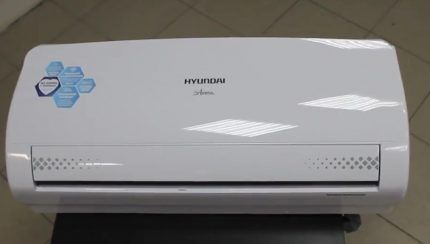
On the wall in the room, the equipment looks very stylish and harmonious. The highlight of the model is that the front panel is made of translucent snow-white plastic, through which the display indication is visible. This technology, called Hidden Display, adds a unique charm to the device.
The model has average dimensions for products of this type: 70 cm in the horizontal plane and 28.5 cm in the vertical plane. The depth of the device is 18.8 cm. These dimensions allow the unit to look neat and not bulky on the wall. The internal module weighs relatively little - 8.5 kg.
The outdoor unit, with dimensions 66x50x24 cm, weighs 25 kg.
The manufacturer has thought out and implemented technical capabilities for simpler and more convenient performance of work on installation of split system modules.
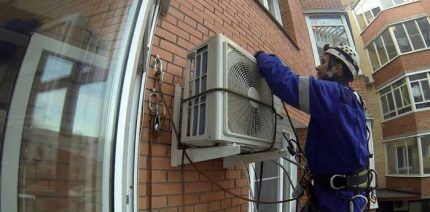
The casing of the outdoor unit and the heat exchanger have an anti-corrosion coating, which increases the product’s resistance to the external environment and, accordingly, extends its service life.
The internal and external units of the split are connected by freon pipelines and an interconnect cable. The pipeline being laid also includes a drainage pipe. The maximum length of the communication route of the monitored device is 10 m.
The unit’s performance is quite sufficient for cooling and heating 1-2 rooms with a total area of 26 sq.m.
The kit comes standard with a control panel, which provides ample opportunities for remote control of all the main settings of the device:
- selection of any of the four operating modes;
- increase and decrease in temperature in 1 °C increments, in the range from 16 °C to 32 °C;
- change in the vertical plane of air direction;
- setting the air conditioner operating time using a timer;
- turning on maximum cooling or heating modes - Turbo;
- setting the fan speed in one of three modes (low, medium, auto).
Please note that in ventilation mode the “auto speed” function is not available.

In addition to the noted capabilities, the remote control allows you to remotely control other options, which will be mentioned in the section reserved for describing the functionality of the device.
Main specifications of the device
All models of the Aurora series are non-inverter units. The device operates for heating and cooling.
However, in terms of energy efficiency, the product is classified as class A. With useful cooling capacities of 2.682 kW and heating of 2.736 kW, the unit consumes energy of 0.835 kW and 0.752 kW, respectively.
By simple calculations we determine the energy efficiency coefficient of the model. In cooling mode it is 2.682/0.835 kW = 3.2, when operating in heating mode - 2.736/0.752 kW = 3.6. These are very good indicators for a conventional, non-inverter air conditioner.
We also recommend reading about how to calculate the required air conditioner power depending on the area of the room. More details - go to link.
Other model specifications:
- cooling intensity - 7.5 m3/min;
- refrigerant - freon R410A;
- number of adjustable fan speeds - 4;
- weight of refilled freon - 640 g;
- operating temperature range: when cooling from +16 °C to + 47 °C, when generating heat from 0 °C to +32 °C.
The minimum noise level of the internal unit of the device is 24 dB.

According to this indicator, the module is quite suitable for installation in bedrooms and children's rooms.
The Aurora external unit, operating at maximum volume with a level of 50 dB, will not cause inconvenience to the users of the device, as well as their neighbors. This is a low figure in the line of devices of this class.
Air conditioner functionality
The device has a good, no-frills set of additional useful options:
- I feel. When this function is activated, the air temperature in the room is read by the sensor not of the indoor unit, but of the control panel. Having it at hand, the user will always be in a comfortable temperature zone.
- Night mode. In this mode, the device creates optimal conditions for sleep in the sleeping area in terms of temperature and noise.
- Automatic self-cleaning air conditioner from dust within 30 minutes after it is turned off.
- Anti-Fungus. When this option is enabled, the evaporator of the indoor module is automatically dried and warmed up to prevent the formation of mold and mildew in the device.
The unit also has the ability to restart previously set settings when the power supply is restored.
Based on the number of operating modes, the device can be classified as a 4-in-1 product. In addition to its main purpose - producing cold or heat, the air conditioner can also operate in ventilation and dehumidification modes.
The dehumidification option, when the device operates without reducing the temperature, may be especially in demand during the off-season.
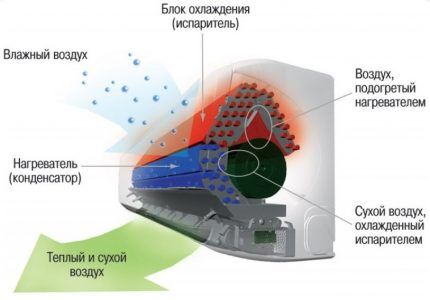
Using this function allows you not only to minimize the risk of catching a cold, but also relieves discomfort in conditions of high humidity in rainy weather and insufficient air temperature in the room. In addition, the room itself will be protected from mold and fungal growths.
Another useful installation feature of this new product from Hyundai is the ability to organize condensate drainage from the indoor unit on both sides.
The internal module of the device is equipped with an air filter, which regular cleaning (manufacturer's recommendation - at least once every 2 weeks) successfully copes with its task. There are no additional filtration elements in the product.
Other standard options for systems that are in the same price niche as the device being reviewed include the following options:
- intelligent auto defrost;
- memory of installed settings;
- “hot start” - delayed start of the fan when the device is turned on for heating, until the heat exchanger reaches a high temperature;
- self-diagnosis - displaying an error code in the event of a malfunction.
Control of the device is not limited to the capabilities of the remote control within the room.
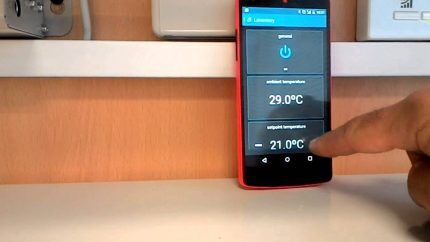
This function is implemented when connecting a special module, which is purchased separately.
The model has the ability to force the device to turn on and off if the remote control is lost or damaged. To do this, use a button on the indoor unit, when pressed, the switched off device will begin to function in automatic mode. The air conditioner can be stopped by pressing the same button again.
Advantages, disadvantages according to users
Despite the fact that the device under review has been introduced to the market relatively recently, the model has a 5-point rating on the main services for searching and selecting goods, and in catalogs, as well as a sufficient number of offers on trading platforms. This can be considered its first advantage.
Other advantages of the model, noted taking into account the few reviews so far, include:
- almost inaudible operation of the internal module;
- ease of control from the remote control;
- accelerated achievement of the desired temperatures during cooling and heating;
- original design of the indoor unit;
- good quality plastic;
- economical electricity consumption.
The analysis of reviews did not reveal any complaints about the quality of the split. All that we could find were statements regarding the control panel: the lack of backlighting and the small font of the names of the functions.
It is worth noting, if not as a drawback, then as a factor that may have to be taken into account when placing the device indoors - this is a below-average length of communications (10 m).
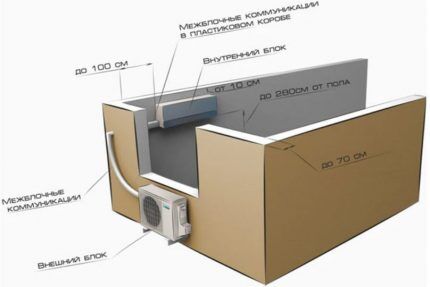
Summarizing the advantages and disadvantages determined from the results of studying the functionality and specifications of the model, as well as from real consumer responses, we can conclude that the advantages of the device in many ways significantly outweigh the disadvantages.
And the extended warranty for the product - four years - adds even more weight to the basket of advantages, since this is one of the highest levels of quality commitment raised by climate control equipment manufacturers, which indicates Hyundai's confidence and responsibility for its product.
Comparison with competitive models
Considering the variety of air conditioners presented on the climate control equipment market, it is sometimes difficult for an ordinary consumer to immediately evaluate all the advantages of the product that is offered to him by the seller. There should be no excessive haste when it comes to purchasing expensive household appliances.
Therefore, in order to determine the validity of choosing a device from the Aurora series, we suggest looking at how our reference model compares to its competitors. For an objective assessment, we will compare the device with similar wall-mounted systems that are in the same price category - 14-16.5 thousand rubles.
Model #1 - Oasis El-09
The Oasis line of air conditioners is represented by the international holding Forte Klima GmbH, which has located its production facilities, like the hero of our review, in China.
The area of the air conditioning service area is 25 m2.
Main Specifications:
- cooling/heating productivity - 2.636/2.929 kW;
- energy consumption during cooling/heating - 0.79/0.77 kW;
- energy efficiency for cooling/heating - 3.3/3.8 (class A);
- minimum noise from the indoor unit - 27 dB;
- operating temperature range - when cooling from 0 °C to +50 °C, when generating heat from -15 °C to +50 °C;
- The maximum length of the communications route is 15 m.
The main difference between the Oasis is that the device is equipped with an inverter-type compressor.This significant characteristic, it would seem, should give the air conditioner superiority over the original model in terms of the parameters inherent in products of this class. But, as can be seen from the presented specifications, this is not the case. The units are in the same energy consumption class (A). As for noise, in optimal mode Hyundai operates even quieter than its inverter competitor.
Also alarming is one of the consumer reviews about interruptions in the operation of Oasis already 2 months after installing the system.
At the same time, it should be noted that the model has an excellent rating and is sold on many trading platforms at an average price of 14 thousand rubles.
Model #2 - General Climate GC/GU-N09HRIN1
The next competitor is the international holding General Climate, created by Russian investors and operating in the production of climate control units at sites in many countries. This model, from the Alfa-Neo series, is also assembled in China.
A unit with a non-inverter type compressor creates a comfortable climate on an area of 26 m2.
Main Specifications:
- cooling/heating productivity - 2.6/2.8 kW;
- energy consumption during cooling/heating - 0.77/0.82 kW;
- energy efficiency for cooling/heating - 3.4/3.4 (class A);
- minimum noise from the indoor unit - 28 dB;
- operating temperature range - when cooling from +18 °C to +43 °C, when generating heat from -7 °C to +24 °C;
- The maximum length of the communications route is 20 m.
The main functions of the model are similar to the options of the Hyundai split system. The exception is the absence of a drying mode.
The model works effectively for heating at sub-zero air temperatures.
Another distinctive advantage of General Climate is its innovative filtration system - an effective plasma filter that fights odors, dust and other impurities in the air, as well as a filter with silver ions that can destroy bacteria.
These technological features of the device will be useful for people with reduced immunity and sensitive to the effects of harmful impurities and allergens contained in the air.
In terms of rating and number of offers on the market, the model is not inferior to its competitors, but its average price is slightly higher - 16.5 thousand rubles.
Model #3 – Royal Clima RC-P29HN
Royal Clima is an Italian brand, the country of origin of the model is China. The area served by the unit is 30 m2.
Main Specifications:
- cooling/heating productivity - 2.9/3.06 kW;
- energy consumption during cooling/heating - 0.872/0.667 kW;
- energy efficiency during cooling/heating - 3.3/4.6 (class A);
- minimum noise from the indoor unit - 28 dB;
- operating temperature range - when cooling from +18 °C to +43 °C, when generating heat from -7 °C to +24 °C;
- The maximum length of the communications route is 20 m.
In terms of the set of options, the model is very similar to the device from Hyundai. This is also a non-inverter and it starts up according to the “on/off” principle.
The device can operate in air drying mode. The indoor unit has a hidden LED display.
The RC-P29HN system has been on the market since 2016 and has the same high rating as its competitors - 5 points. There are no significant shortcomings for this model in consumer reviews.
The price of the product ranges from 15.5 thousand rubles.
Conclusions and best offers on the market
A review of the H-AR18-09H model from the Hyundai Corporation and a comparison of it with competitors’ analogues still brings the device in question somewhat ahead. And this despite the fact that each system has its own advantages.
Important for most air conditioner users is the ability to enjoy a comfortable climate without annoying noise. It is for this indicator that Hyundai is certainly among the leaders. And the attractiveness of the novelty and manufacturability of the device, along with the quite reasonable price for such a device, make us even more inclined to choose this model.
If you are the owner of such a split system, please tell our readers about your personal experience of using it. Are you satisfied with the performance of the equipment and what criteria did you use when choosing an air conditioner for your home? Write your comments, upload a photo of the device, ask questions in the block below.

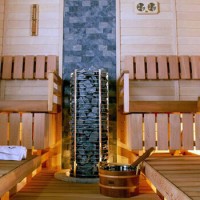
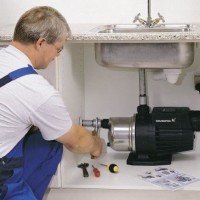

Well, original design is not the criterion by which most people make purchases. But silent operation, energy consumption class, the presence or absence of a Wi-Fi module, the quality of the plastic from which the device body is made - all this is important. And, of course, how the air conditioner copes with its main tasks - cooling the room in hot weather and heating in cool weather. In general, Hyundai makes good split systems, and there are usually no problems with them.
We just bought one last summer, the seller praised Hyundai. And now I wanted to heat the room with air conditioning, the heat is not good, but it started flowing into the room, and not out as usual. The air conditioner is still under warranty.What could be the problem with the air conditioner or improper installation? Who should I file a complaint against?
Good afternoon, Marina!
A leaking air conditioner is not always a sign of defective or improper installation. If in the summer the device worked normally for cooling, then most likely the reason for the leakage during heating is that during the heat the system worked at full power, as a result of which the condensate did not have time to be completely removed. Perhaps you simply turned off the device, which was operating in intensive cooling mode, and now the accumulated condensate is coming out.
Solving the problem is very simple: turn on the air conditioner in cooling mode at maximum power and gradually reduce it. You can use the Sleep or Eco programs. The device should operate for 1-3 hours. If the outside temperature does not allow using the cooling mode, you will have to drain the condensate manually. Since your air conditioner is under warranty, it is better for you to invite a service center specialist to do this.
And one more thing: before performing all these manipulations, please make sure that the drainage tube is installed correctly and not lifted up!
Let's look at several main reasons that can lead to the air conditioner leaking into the apartment when heating:
1. The drainage hole is clogged;
2. The tray in which the condensate should be collected has moved;
3. If the air conditioner “spits”, then this means the evaporator is frozen, since the condensation temperature is too low.
These are the main reasons that may cause this problem.In any case, you need to invite specialists from an official service center so that they can fix the problem and you will not lose the official warranty.
I also advise you to carefully read the operating conditions, especially regarding temperature conditions, where it is written what the ratio of indoor and outdoor temperatures should be.